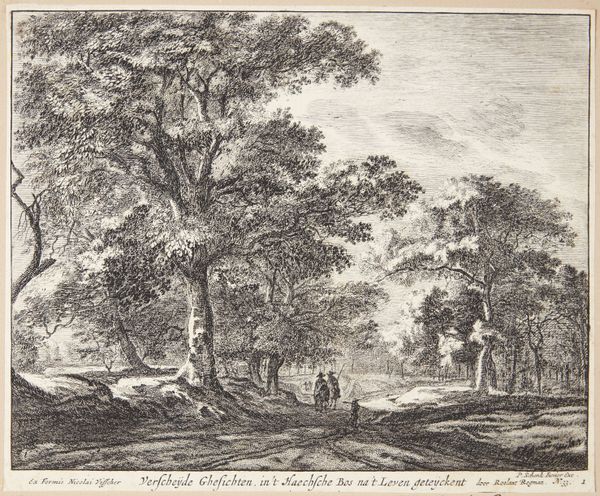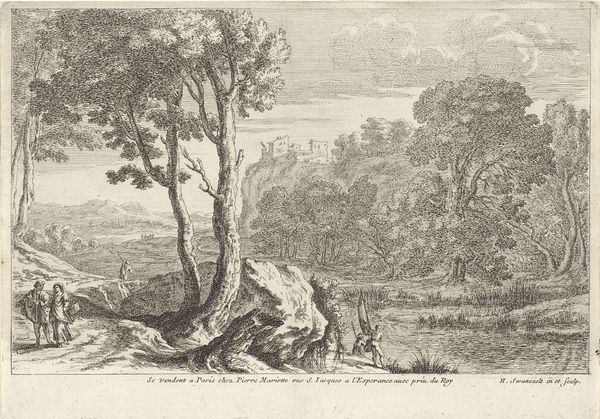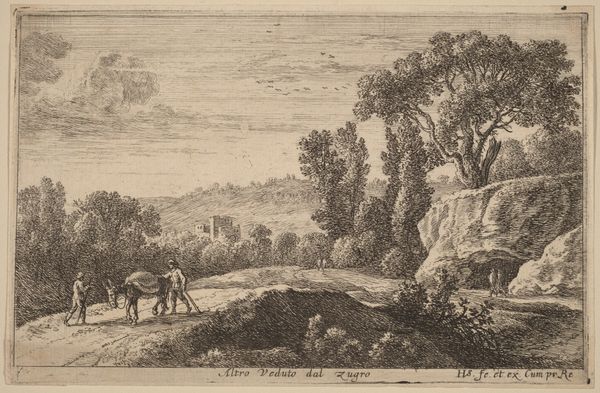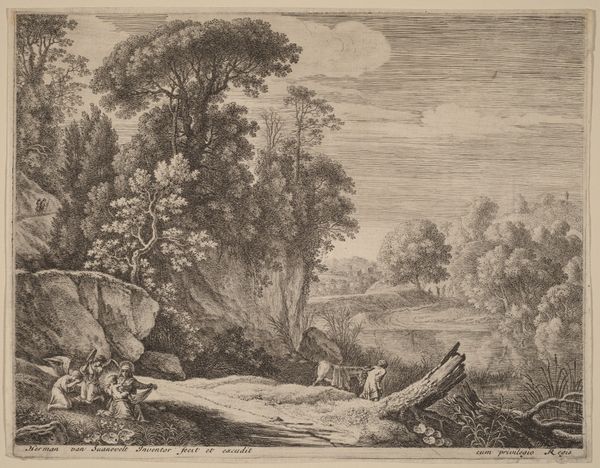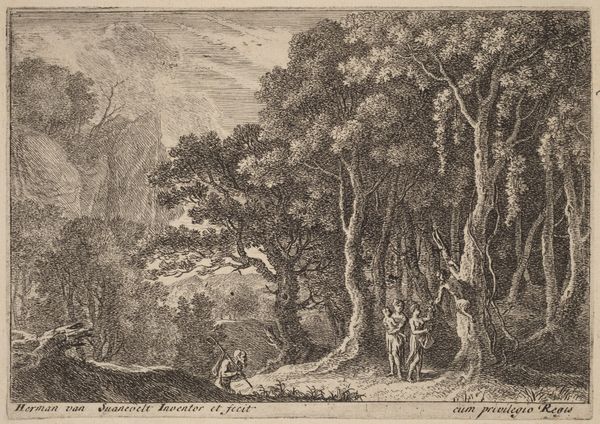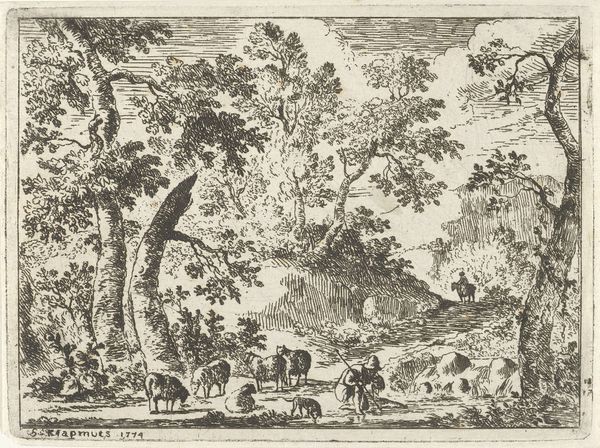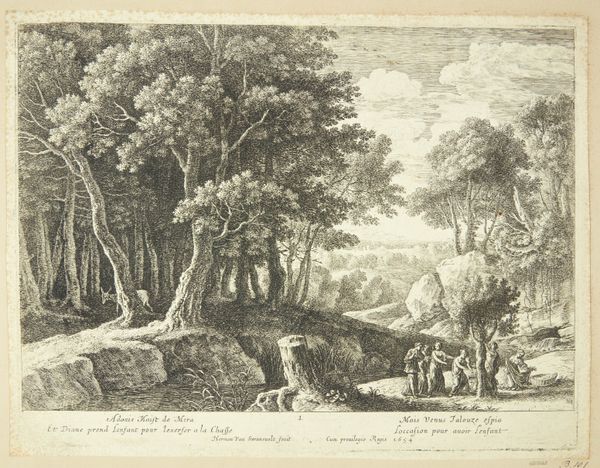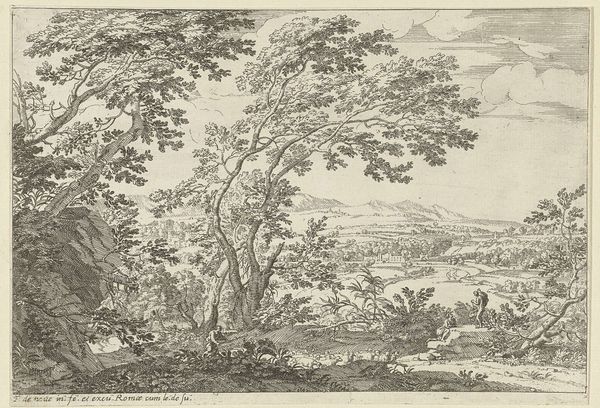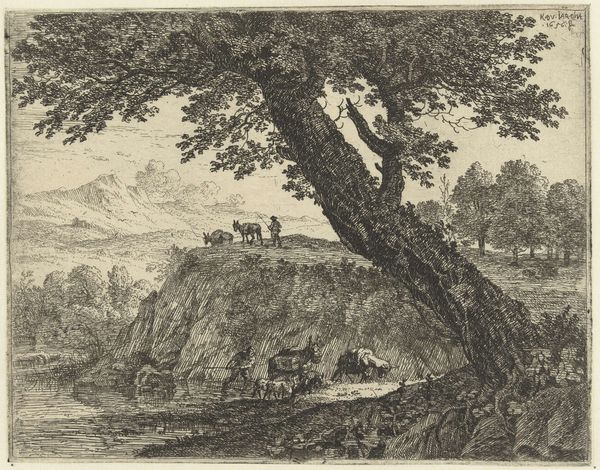
print, etching, engraving
#
ink drawing
# print
#
etching
#
landscape
#
genre-painting
#
engraving
#
realism
Copyright: National Gallery of Art: CC0 1.0
Editor: Here we have "Landscape with Two Cows," an etching and engraving by George Walker, dating from 1807. What strikes me is the almost harsh detail given the pastoral subject – the tree looks weathered, and the cows seem quite ordinary. What can you tell me about this work? Curator: Well, let's consider the production itself. This wasn't painted; it was printed, reproduced. The inscription says it was "printed from stone." Does this make us rethink the notion of Walker as an artist producing an aestheticized landscape? Who was this made for, and how widely could it circulate? Editor: I see what you mean. The fact it’s a print democratizes the image to an extent. It suggests a market for such scenes. But doesn't the detailed labor in creating the etching plate elevate it somewhat? Curator: Precisely. There's tension. Consider the societal value then placed on handcraft versus machine production. This print lies somewhere in between. We have this detailed rural scene, but its means of production were firmly rooted in the urbanization and industrial advancements of London itself. The material origins of the print -- the ink, the paper, the printing stone -- tie it directly to a specific economic and social reality. It speaks volumes about the consumption of idyllic images by an increasingly urban populace. The text tells us that the print originated from the "polyautographic office," linking its creation directly to a nascent commercial print industry in London. Editor: So, beyond just depicting cows, the print speaks to broader shifts in labour, materials, and accessibility? Curator: Exactly. What appears at first glance a simple scene reveals a whole network of making and consumption upon closer inspection. Editor: I never would have looked at it that way without thinking about the "how" and the "why" behind its making.
Comments
No comments
Be the first to comment and join the conversation on the ultimate creative platform.

